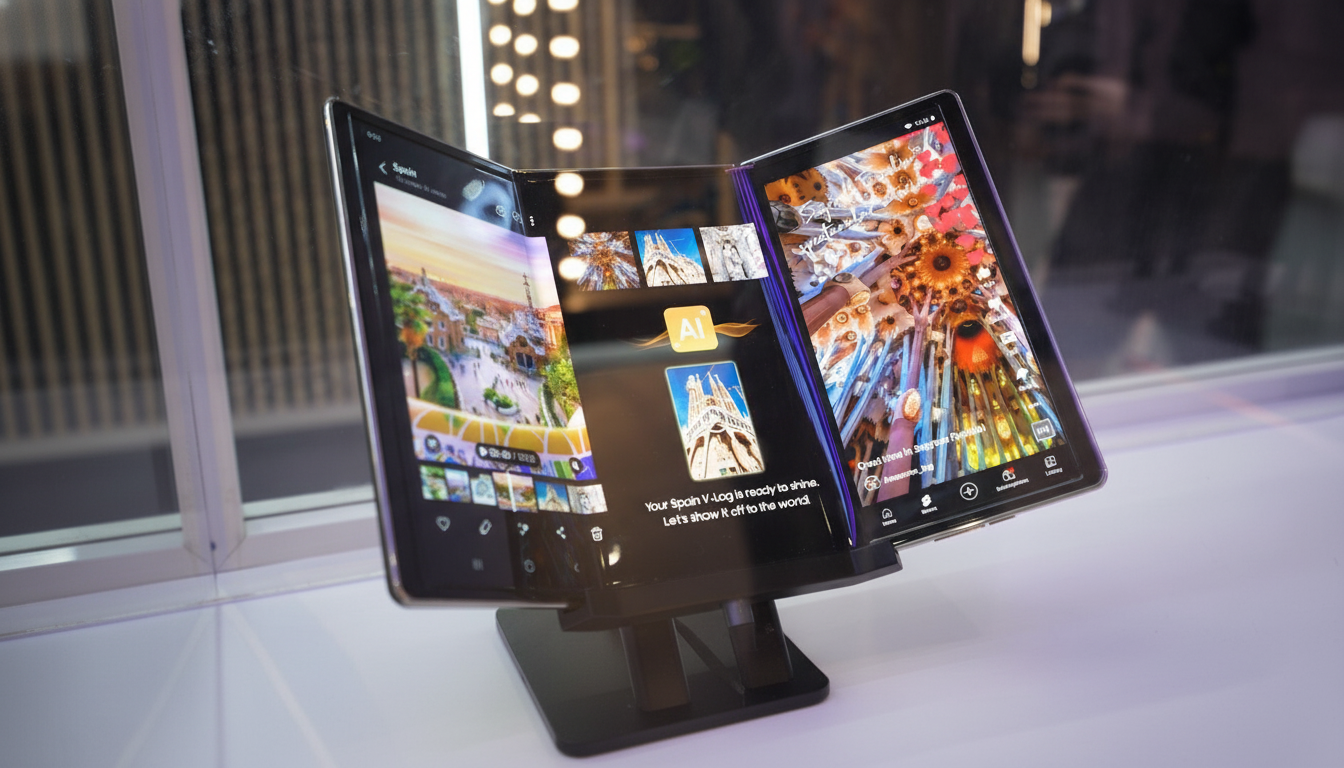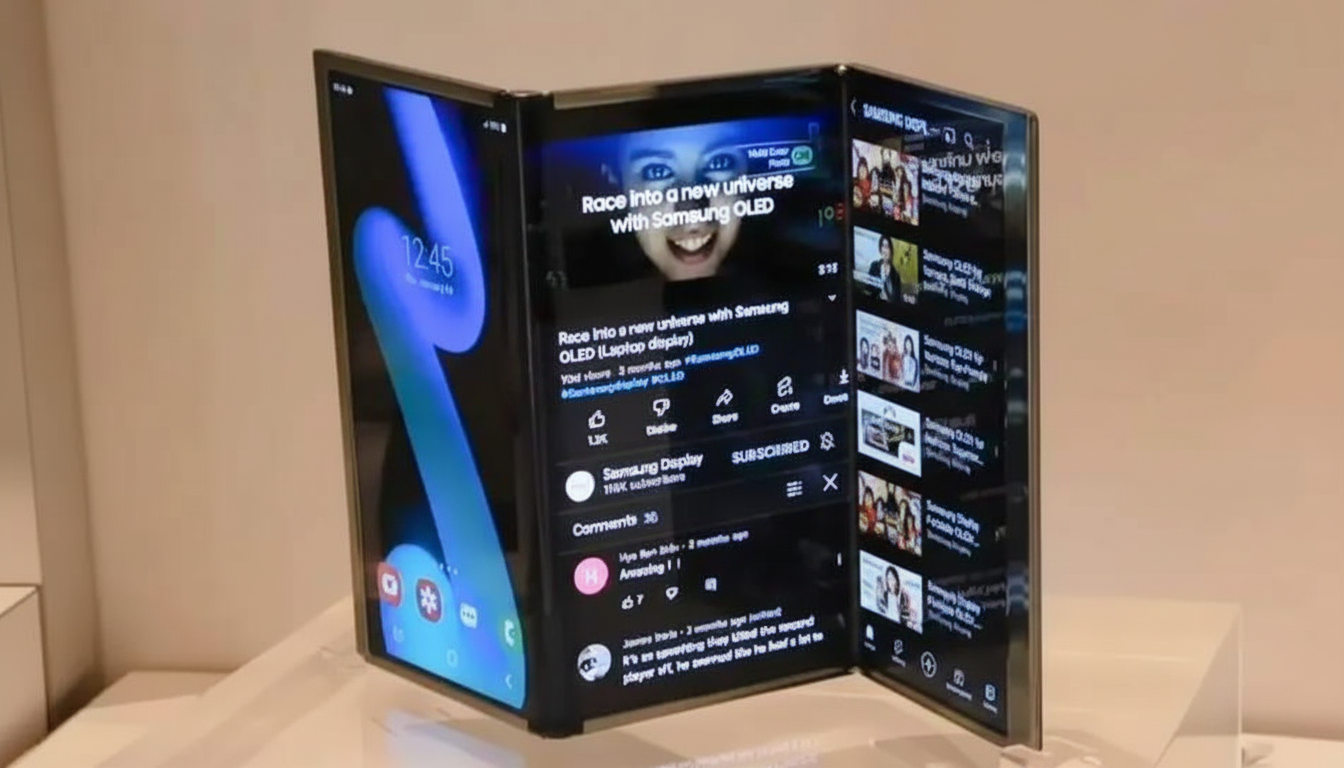Samsung’s much-rumored tri-foldable is inching its way towards an unveiling, but early sales might be limited to certain Asian markets. Several reports from inside the industry indicate the device is preparing for a major launch in South Korea, China, Singapore, Taiwan (and potentially the UAE), while U.S. consumers and most of Europe are left waiting.
A Debut, Paired With A High-Profile Summit
The Korea Herald has connected the revelation with the APEC CEO Summit in Gyeongju, a venue that Samsung has historically used to woo business leaders and announce its technology ambitions. Although precise retail timing remains in flux, the selection of location serves to underscore the company’s desire to position itself as defining the tri-fold as more than a consumer gadget, while also presenting it as a marquee innovation for enterprise and high-end customers.

How about regions with only a focal few cities where foldable phones are essentially restricted? Well-known leaker Evan Blass has echoed the limited-market perspective, claiming rollout in the “Greater China” area and close-by centers. That matches Samsung’s playbook from previous years: debut of radical form factors where the demand for early tech and luxury tier is highest, then scaling when production software and the partner ecosystem come online.
Why the U.S. May Not Be an Option at Launch Time
The decision to hold off on the U.S. at launch probably has a lot to do with cost, complexity, and risk management. U.S. carriers depend on mmWave, which is an added line item for materials cost, antenna design challenges, and testing cycle. For a first-generation tri-fold with complex hinges and many OLED panels, variables of tautness can mean the difference between rolling out neatly or stumbling into a high-profile issue.
There is also the service and durability calculus, because a tri-fold brings three-way hinge tolerances and more potential failure points, and a repair network that’s spread even thinner. By concentrating initial sales in regions where Samsung has deep after-sales partnerships — and where luxury devices trade for a premium — the company minimizes such exposure as it accumulates real-world data.
Finally, software readiness matters. Tri-Panel WatchCanvas calls for aggressive multitasking optimizations, window management behaviors, and app compatibility considerations. Releasing regionally buys Samsung time not just to fine-tune One UI for tri-folds, but to do so before it hits markets where app expectations and buyer scrutiny are particularly high.
Small Batch Production and a Very Expensive Price Tag
Supply murmurs lean toward a pilot run of around 50K units. For context, that’s less than a percent of mainstream foldable volumes, suggesting this is more about halo than a mass push. The reported price tag — about 4 million won, or about $2,780 — would place the device far above existing book-style foldables and squarely in ultra-premium territory.
That pricing is commensurate with the bill of materials: you have three soft OLEDs, reinforced hinge assemblies, high-density cabling looms, and a larger multifunctional battery system divided among multiple cells. It also reflects scarcity. Early adopters in countries like China and Korea will gladly pay up for first-of-its-kind hardware; Samsung’s China-targeted W series has long demonstrated how exclusivity and build can keep margins high.
Design and Specifications We Can Expect at Launch
Design chatter suggests an inverted C-shape that would form a compact square when folded shut but expand to a tablet-sized canvas. That, in turn, is compared to the zig-zagging seen on rival concepts, which could do better at protecting an outer screen and keeping panel stress even while folding.

On the hardware level, you can look forward to a best-in-class but not jelly-hot squid-juice Snapdragon 8-type processor — probably as an engineering decision to focus on thermal stability and power management rather than chasing the latest round of benchmark glory.
Camera leaks revolve around a 200MP primary sensor, and Samsung would have to rely on pixel binning and excellent OIS in order to produce credible flagship imagery despite the device’s mechanical complexity.
Software is the swing factor. A dedicated One UI build will also reportedly offer support for portrait three-app concurrency, context-aware windowing, which keeps your layouts in mind across folds, and persistent taskbars. Done well, that could make a tri-fold ideal for editing spreadsheets and scribbling next to video calls, creative workflows that wouldn’t be possible on a single screen but which tend to require a laptop.
Strategic Context and the Likely Market Impact Ahead
Both IDC and Counterpoint Research have observed that foldables are outpacing the overall handset market, with recent reports indicating strong headway in China and an ever-growing uptake of premium devices in Korea. Even in small quantities, a tri-folder like this allows Samsung to control the narrative on that next phase of mobile multitasking and test out supplier yields for triple-panel stacks and next-gen hinges at the same time.
Competition is heating up. There have been greater strides from Huawei on tri-fold concepts, and Chinese OEMs are iterating furiously on thin-and-light foldables. By putting its first tri-fold in the market where neither foldable penetration nor luxury appetite is lacking, Samsung can seed an ecosystem of cases, keyboards, and productivity apps before pushing it out globally.
What to Watch Next as Samsung Nears a Tri-Fold Launch
Key signals will be if Samsung ramps up production beyond a pilot batch, how quickly it adds markets, and where the software goes after getting early feedback. If that launch is smooth, the rollout could go global — including in carrier-loaded locations such as the U.S. — once cost, battery life, and app optimization clear a suitably low hurdle.
For now, it seems the tri-fold will be a showcase device for both power users and brand loyalists in Asia. Whether it ends up the next mainstream category — or a dazzling niche — depends on how convincingly Samsung makes three displays act as one, everyday computer-in-your-pocket.

